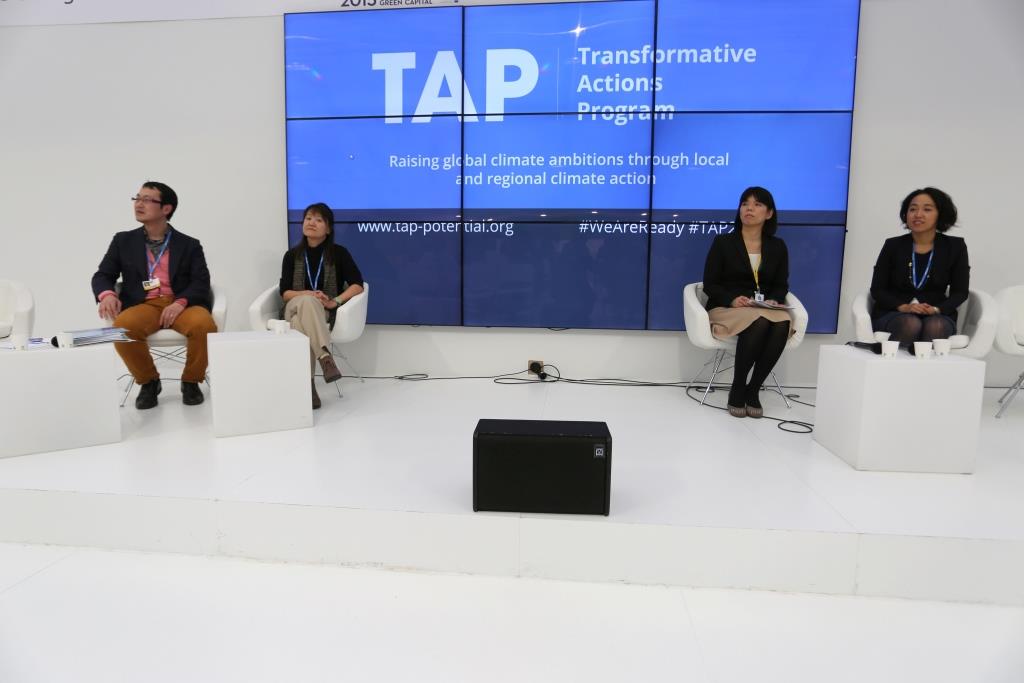Is communication the greatest barrier to unlocking climate finance?
Financing resilient urban development is an essential tool in achieving global sustainability targets. Yet there is a lack of communication in the sector and an urgent need to bridge the gap between financial institutions and local governments in particular.
Hans-Peter Egler, CEO of the Global Infrastructure Basel Foundation (GIB), opened the “Financing resilience forum” at Resilient Cities 2016 this morning with a story that illustrated how a lack of communication can lead to missed opportunities for investors and communities.
Investors established a fancy resort along a beach in Indonesia, and very close to a forest. Soon after construction was complete, a wildfire destroyed the entire resort. The investors responded by rebuilding an even nicer establishment that was destroyed just a few months later by yet another wildfire. Had the investors connected with the community, they would have known their resort was in a location where wildfires occur regularly and that they needed to take protect their investment – or find a different site altogether.
This lack of communication meant the investors lost quite a bit of money, while local residents missed out on new income opportunities available through the resort.
The financing resilience forum at Resilient Cities 2016 did not aspire to resolve this particular issue, but certainly took strides in breaking down barriers in climate finance-related communications. By convening representatives of the insurance industry, networks of local and subnational governments, international bodies and finance advisory networks, the forum stimulated a dynamic discussion among distinct entities with a stake in climate finance. Together they offered keen insights into barriers and opportunities for strengthening finance for resilient development.
What are the key barriers in financing resilience?
Regulation and governance: There is often uncertainty over regulatory and tax policies as well as barriers presented by national legislation. In South Africa, there is a single unit dedicated to public-private partnerships with the sole authority to initiative projects. No one outside this unit can initiate a project, which means very few can move forward.
Capacity and expertise: Local and subnational governments are ready to engage in resilience projects, but they need the capacity and expertise to not only effectively implement their vision but also to demonstrate they are creditworthy. At this point, very few municipalities in the developing world are considered creditworthy, which presents a substantial barrier in receiving finance. Investors are, after all, seeking a return and want know that the “right” people are running a project.
Clarifying language: The language used in climate finance is also crucial. Actors in this space might have the same message, but they express it in 10 different ways. There are many different interpretations and uses of term “bankable”, for instance, which can undermine the efficacy of communications in the sector.
How do we bring climate finance to scale?
Enabling frameworks: Climate finance stakeholders need to engage with national governments to develop finance policy environments that encourage investment and to support local governments in developing frameworks for pricing climate externalities.
Innovative programs: There is demand for forward-thinking programs that stimulate innovation and remove barriers in access to finance. Experiment-driven labs – such as the Global Innovation Lab for Climate Finance – can identify catalytic financial instruments and pilot new funding models. The Transformative Actions Program (TAP), managed by ICLEI, is another innovative program that aims to catalyze and improve capital flows to local and subnational governments by increasing their visibility and better positioning them for financing through targeted capacity building.
Data and standards: Investors and insurance companies need data to underwrite climate risk, while local and subnational governments need support in identifying hazards and risks in a standardized and clear way. The GIB SuRe Standard – the Standard for Sustainable and Resilient Infrastructure – is a key example of a decision support tool for project developers and contractors that also provides a method for investors to choose sound investment opportunities in infrastructure. The Standard encourages evaluation of risks linked to sustainability and resilience, and on-going actions to mitigate them.
Building a business case: Finally, it is essential to make a business case for resilience, which is a significant challenge in climate finance at the moment. The businesses case for mitigation is well established, and resilience needs to advance on this as well.
This panel discussion in the “Financing resilience forum” was facilitated by Hans-Peter Egler and featured a discussion among:
- Vanessa Otto-Mentz, Head of Group Strategy Unit, Santam, Cape Town, South Africa
- Maryke van Staden, Low Carbon Cities Program Manager and Director of the carbon Center, ICLEI World Secretariat, Bonn, Germany
- Palash Srivastava, Director of PPPI and Programmes, Infrastructure Development Finance Company, Mumbai, India
- Stefan Köhler, Head of Programme, Disaster Risk Reduction for Resilience UNOPS, Copenhagen, Denmark
- Thaven Naidoo, Africa Climate Change Adaptation Coordinator, Climate Technology Initiative Private Finance Advisory Network, Johannesburg, South Africa






